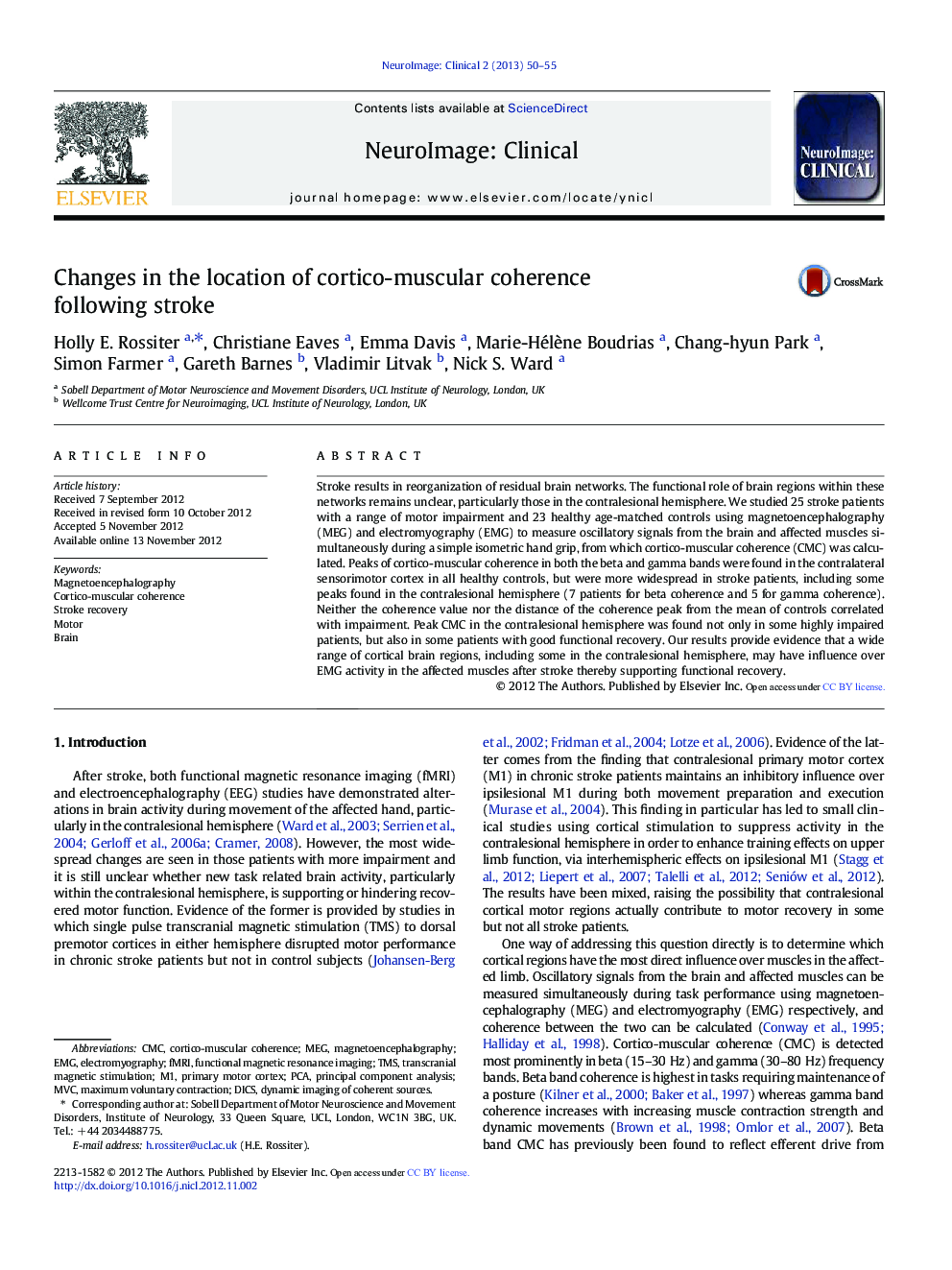| Article ID | Journal | Published Year | Pages | File Type |
|---|---|---|---|---|
| 3075488 | NeuroImage: Clinical | 2013 | 6 Pages |
Stroke results in reorganization of residual brain networks. The functional role of brain regions within these networks remains unclear, particularly those in the contralesional hemisphere. We studied 25 stroke patients with a range of motor impairment and 23 healthy age-matched controls using magnetoencephalography (MEG) and electromyography (EMG) to measure oscillatory signals from the brain and affected muscles simultaneously during a simple isometric hand grip, from which cortico-muscular coherence (CMC) was calculated. Peaks of cortico-muscular coherence in both the beta and gamma bands were found in the contralateral sensorimotor cortex in all healthy controls, but were more widespread in stroke patients, including some peaks found in the contralesional hemisphere (7 patients for beta coherence and 5 for gamma coherence). Neither the coherence value nor the distance of the coherence peak from the mean of controls correlated with impairment. Peak CMC in the contralesional hemisphere was found not only in some highly impaired patients, but also in some patients with good functional recovery. Our results provide evidence that a wide range of cortical brain regions, including some in the contralesional hemisphere, may have influence over EMG activity in the affected muscles after stroke thereby supporting functional recovery.
► We examined cortico-muscular coherence location in stroke patients and controls. ► The location of peak coherence was more widely distributed in stroke patients. ► In some patients, peak coherence was found in the contralesional hemisphere. ► The location of coherence in patients did not correlate with impairment. ► Contralesional hemisphere can support functional motor recovery after stroke.
